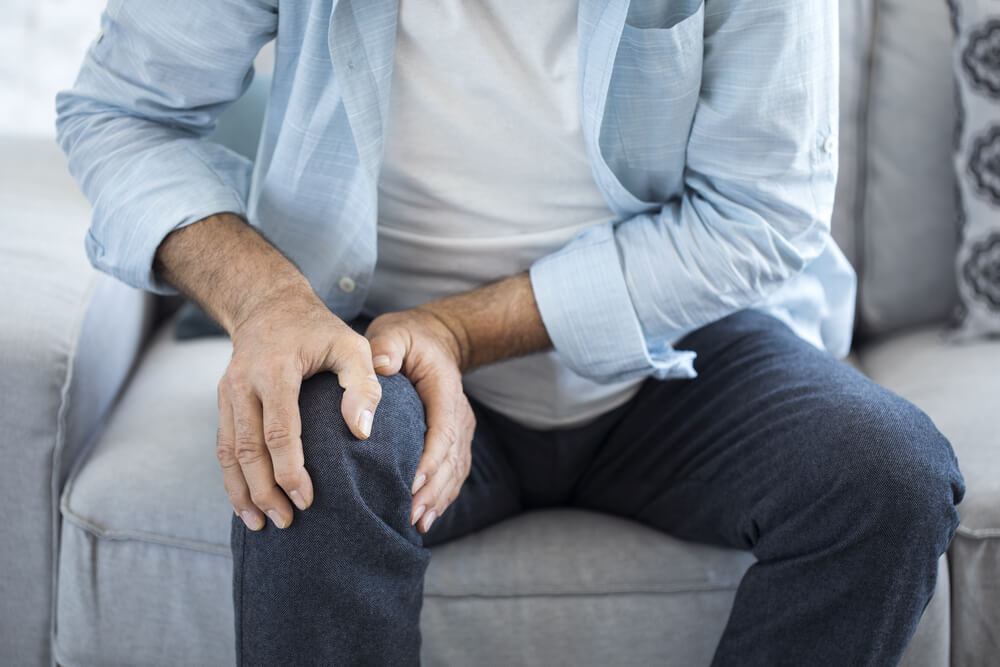It’s rare that anyone thinks about how much the knees are involved in common tasks like sitting and standing. However, stiffness and pain in your knee could make sitting for a while harder to do.
Knee pain is one of the most common types of pain; studies estimate that 25% of adults experience frequent episodes of this type of pain. Dealing with a stiff or painful knee after sitting is tougher if you don’t know what’s causing your symptoms. Physical therapists can help you figure out the condition that’s causing your knee pain, and they also offer treatment options for many issues that cause knee pain.
What’s causing your knee stiffness and pain after sitting? It’s likely one of these three conditions
There are a variety of issues that can lead to a stiff and painful knee after sitting. After all, the anatomy of the knee is complex. It’s formed by the thighbone, the shinbone and the kneecap, and these bones come together to form what’s called a hinge joint. Additionally, your knee contains many other structures. Some of these include cartilage, ligaments, tendons and bursae.
A problem with any of these structures can lead to stiffness or pain in your knee; however, there are three conditions that are the most likely culprits of such symptoms. These knee issues are:
- Patellofemoral syndrome — This condition is also called runner’s or jumper’s knee. Medical researchers estimate that patellofemoral syndrome occurs annually in about 23% of adult Americans. Falls, impacts to the kneecap and repetitive knee movements can cause runner’s knee. Typically, patients with this condition feel pain when bending their knee or when their knee has been bent for long periods of time. The pain is felt around the kneecap.
- Knee osteoarthritis — Osteoarthritis is often called wear-and-tear arthritis. This type of arthritis tends to develop naturally in joints as a person ages. It’s estimated that 10% of men and 13% of women who are 60 or older have knee osteoarthritis. The wearing out of cartilage in your knee can lead to stiffness or pain in the knee. Often, these symptoms are worse first thing in the morning or after you’ve been sitting down for a while. Knee osteoarthritis can cause swelling in the knee as well.
- Torn meniscus — Researchers report that up to 14% of Americans develop a meniscus tear every year. This injury involves a C-shaped piece of cartilage in your knee called the meniscus. Common symptoms of a meniscus tear are knee pain, swelling and popping sounds when moving the knee. It’s also possible for this injury to make bending your knee more difficult. Additionally, meniscus tears can cause the knee joint to lock up.
Peak Performance can help you learn why your knee is stiff and painful after sitting
You don’t have to continue wondering why your knee feels stiff and painful after sitting. Our team of therapy specialists at Peak Performance can reveal the source of your symptoms. We can figure out which knee issue you’re dealing with by performing a free screening on you. Our team can then design an individualized treatment plan that targets the specific source of your stiffness and pain.
Do you want to start getting our help with your knee issue? Contact us today for more information or to schedule your free screening.

